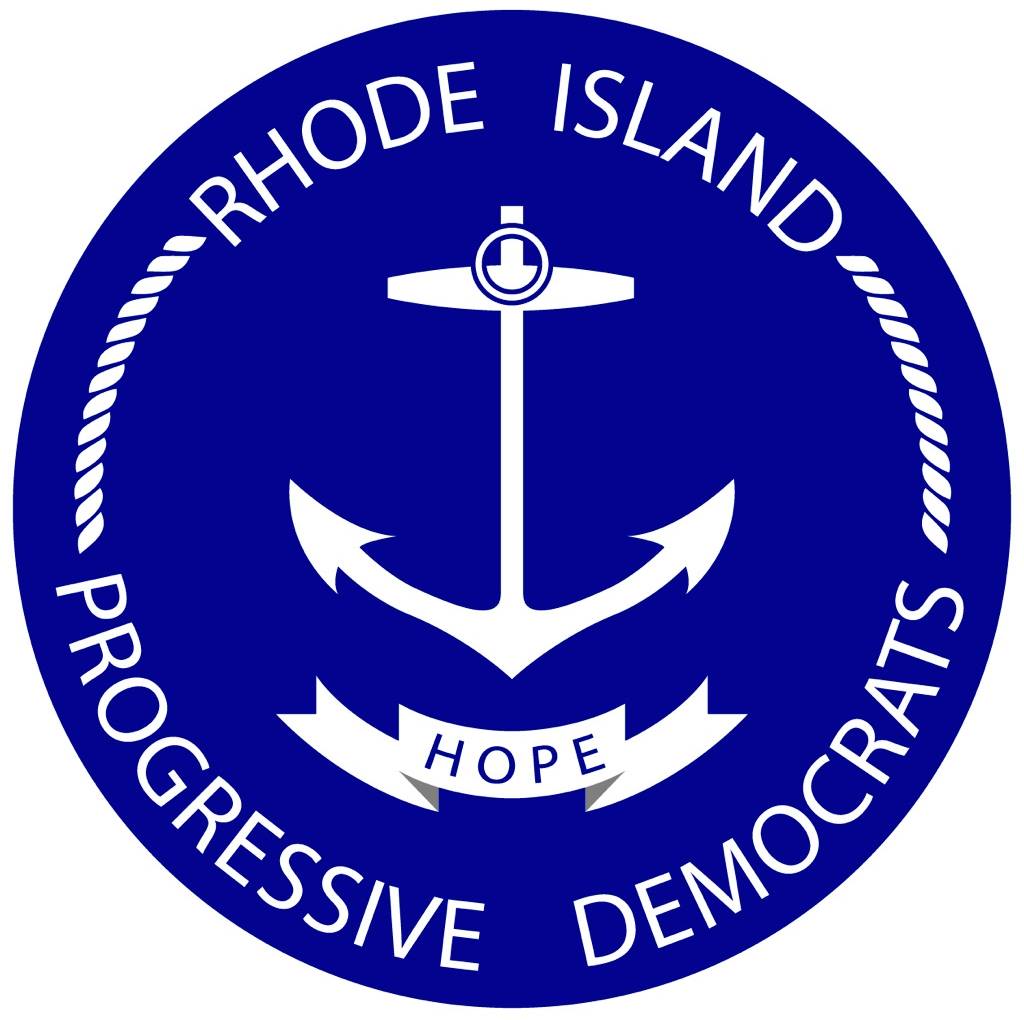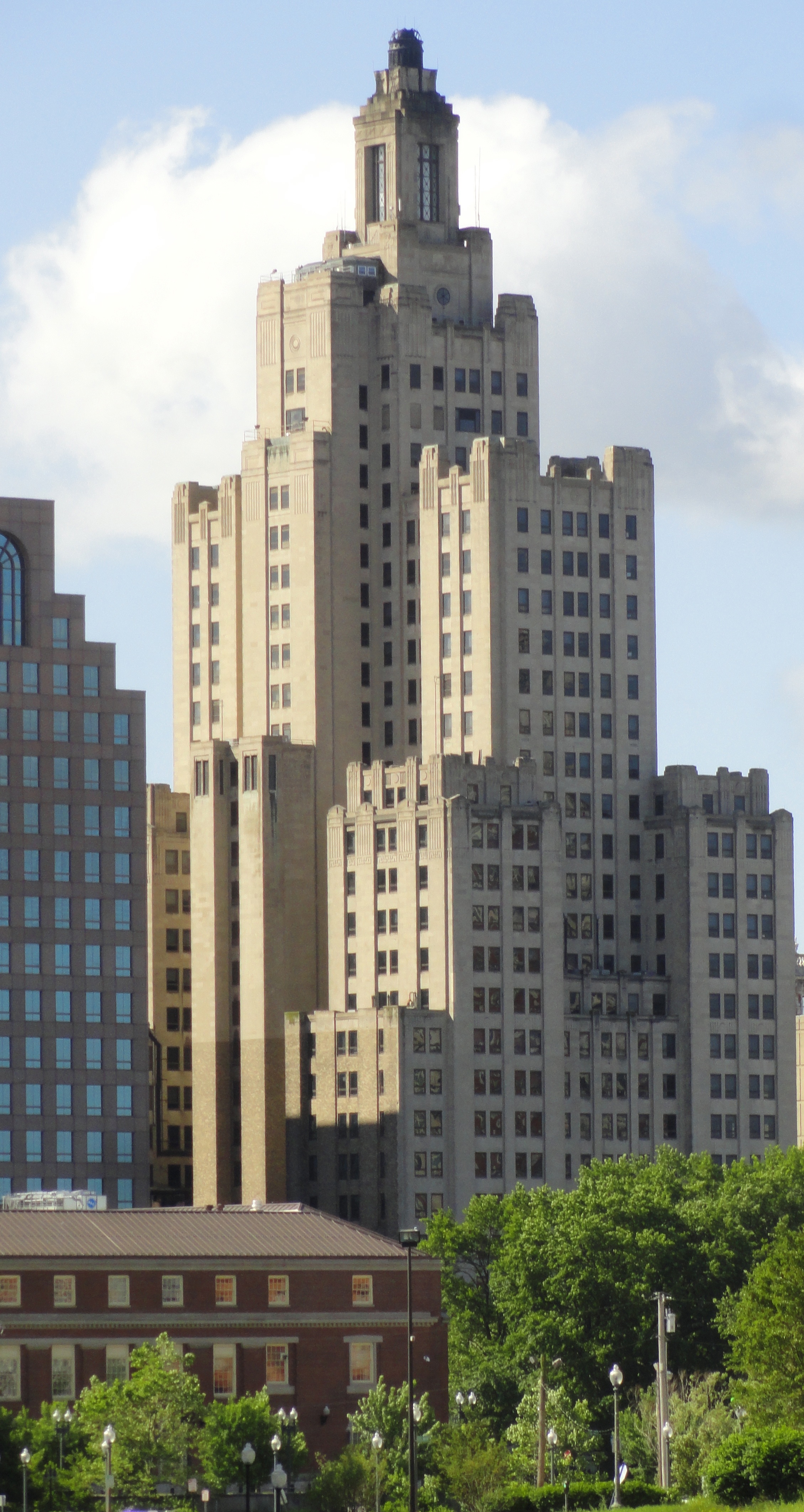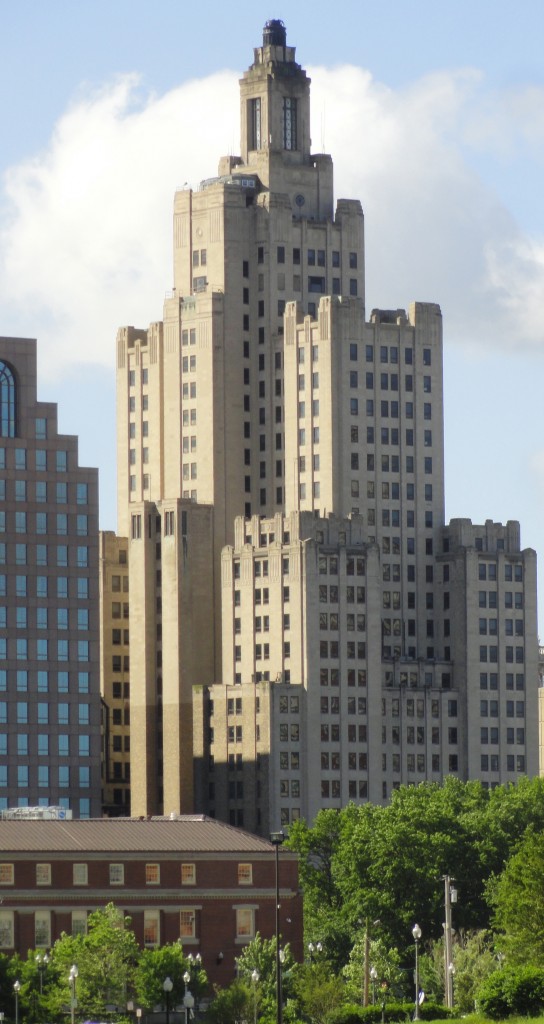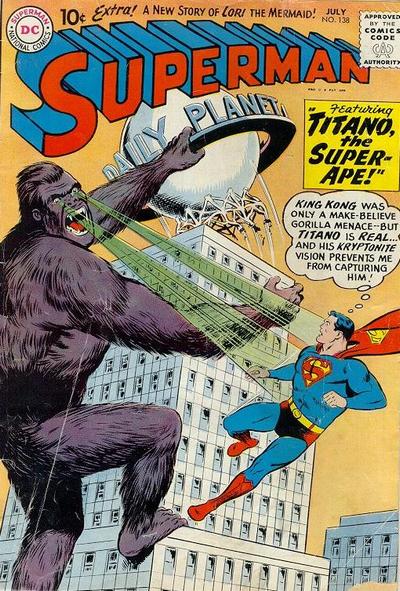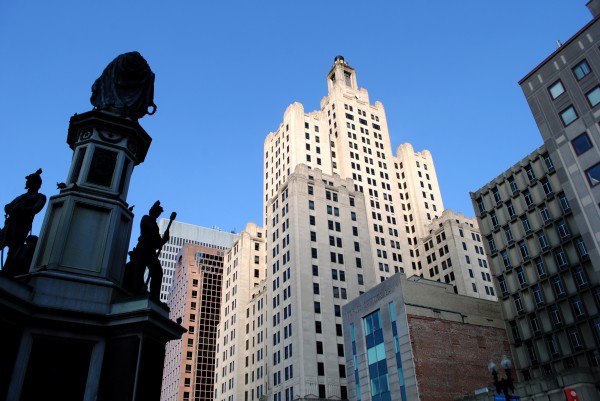 Every night in downtown Providence, we see the darkened windows of our state’s tallest building. It’s a sad sign of failed development policies. Recently, the developers announced that they are going to hold the building empty for yet another year, waiting for a massive payout from the taxpayers. What a better way to bully Rhode Island into giving them subsidies than to insist on keeping the largest and most recognizable building in Rhode Island completely empty?
Every night in downtown Providence, we see the darkened windows of our state’s tallest building. It’s a sad sign of failed development policies. Recently, the developers announced that they are going to hold the building empty for yet another year, waiting for a massive payout from the taxpayers. What a better way to bully Rhode Island into giving them subsidies than to insist on keeping the largest and most recognizable building in Rhode Island completely empty?
In 2008, the building was bought by David Sweetser and High Rock Development LLC for $33 million dollars. In a bid to lower their taxes, the developers are now arguing that the building has “no value.” In 2013, Sweetser asked for $75 million in state assistance and tax breaks, and each year, he comes back to ask again.
Rhode Islanders should not be held responsible for bad business decisions. And we should subsidize affordable housing, not luxury apartments that further segregate the rich from the poor. With the massive expansion of the agency that did 38 Studios, more and more Rhode Island corporations are coming to expect big checks from the state for any developments they do. And more and more developers are holding development hostage to bargain for public bailouts. It’s time to take action.
That’s why, continuing our strong stance against corporate welfare, we call on our political leaders to reject any subsidies for the Superman Building. We need to send a clear message that holding the building empty to extort money won’t work. Until the developer gets the message, the building will remain vacant.
We ask Sweetser to either develop the building or sell it to someone who can. The people of Rhode Island will not be bullied into giving absurd amounts of money to bail out a corporation’s mistakes. We can’t let this Massachusetts developer take advantage of us by using enormous tax subsidies to build unaffordable luxury apartments. Spending $75 million on corporate welfare for luxury apartments is unethical. Less than 5 years ago, the state of Rhode Island gave $75 million dollars to 38 Studios. We ask that we not make that mistake again.

